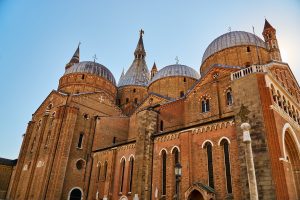
If you are planning to visit Northern Italy, Padua should definitely be on your list. This beautiful city, located in the Veneto region, has a rich history, breathtaking architecture, and a vibrant cultural scene.
Padua, also known as Padova in Italian, is a medium-sized city with a population of about 200,000 people. It is situated on the Bacchiglione River, about 40 kilometers west of Venice. Although it is often overshadowed by its more famous neighbor, Padua has a lot to offer to visitors who are looking for an authentic Italian experience.
One of the main attractions of Padua is the Scrovegni Chapel, a small but impressive building that houses some of the most important frescoes in Western art. The chapel was commissioned by Enrico Scrovegni, a wealthy banker, in the early 14th century. The frescoes were painted by the famous Italian artist Giotto, who was a pioneer of the Renaissance style. The frescoes depict scenes from the life of Christ and the Virgin Mary, and are considered a masterpiece of religious art. It is said that Giotto was so skilled at creating realistic figures that he could make a fly on the wall look like it was about to take off.
Another must-see attraction in Padua is the Basilica di Sant’Antonio, a huge church dedicated to Saint Anthony, one of the most venerated saints in the Catholic Church. The basilica was built in the 13th century, and its architecture is a mix of Gothic and Romanesque styles. Inside, visitors can admire a vast array of artworks, including sculptures, frescoes, and mosaics. The highlight of the basilica is the tomb of Saint Anthony, which is made of bronze and is adorned with precious stones. According to tradition, Saint Anthony is the patron saint of lost things, and many people come to the basilica to pray for his intercession.
Padua is also home to one of the oldest universities in Europe, the University of Padua, which was founded in 1222. The university has a long and illustrious history, and has produced many famous scholars and scientists over the centuries. Among its most famous alumni are Galileo Galilei, who taught at the university in the 16th century, and Elena Cornaro Piscopia, who became the first woman in the world to receive a PhD in 1678. Today, the University of Padua is still a prestigious institution, and attracts students from all over the world.
In addition to its historic and artistic treasures, Padua also has a lively cultural scene. The city hosts many festivals and events throughout the year, including the famous Palio di Padova, a horse race that takes place in the city’s main square, Piazza dei Signori. The Palio is a tradition that dates back to the 14th century, and is a colorful and exciting spectacle that draws crowds of locals and tourists alike.
If you are a foodie, you will also love Padua’s cuisine. The region of Veneto is famous for its wine, especially the sparkling white wine Prosecco, which is perfect for sipping on a sunny afternoon. Padua is also known for its delicious food, which includes dishes like risotto with radicchio and tiramisu, a dessert made with layers of ladyfingers, mascarpone cheese, and cocoa powder.
To get a taste of Padua’s vibrant atmosphere, you should take a stroll through the city’s historic center, which is full of narrow streets, colorful buildings, and lively piazzas. You can also visit the Orto Botanico, a beautiful botanical garden that was founded in 1545 and is home to over 7,000 plant species from all over the world. The garden is also a UNESCO World Heritage Site, and is a great place to relax and enjoy the beauty of nature.
If you are interested in shopping, Padua has a variety of options to choose from. The city has many artisan shops where you can find unique handcrafted items like leather bags, jewelry, and ceramics. There are also several markets that sell fresh produce, cheeses, and other local specialties.
Padua is a city with a rich and fascinating history, and there are many interesting facts and trivia about it. For example, did you know that the famous scientist Galileo Galilei was put on trial by the Catholic Church in Padua in 1633 for advocating the heliocentric model of the solar system? Or that Padua is home to the oldest botanical garden in the world, the Orto Botanico, which was founded in 1545? Another interesting fact is that Padua was once a major center of the wool trade in Europe, and the city’s wealthy merchants built many impressive palaces and mansions to show off their wealth.
In conclusion, Padua is a hidden gem in Northern Italy that is definitely worth a visit. The city’s rich history, stunning architecture, and vibrant culture make it a unique and unforgettable destination. Whether you are interested in art, history, food, or shopping, Padua has something to offer everyone. So why not add it to your travel itinerary and discover the beauty of this charming Italian city for yourself?